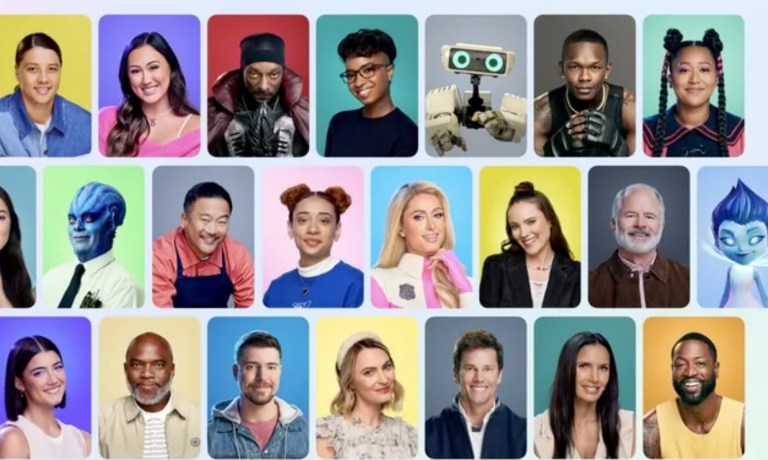Does Meta’s 3.59 Billion Users Give It Competitive AI Moat?

Big Tech’s artificial intelligence (AI) arms race shows no signs of slowing to a cold war.
At least not any time soon, while there are still consumers to convert and addressable markets to conquer.
Meta on Wednesday (Sept. 27) introduced 28 new AI-powered chatbot personas, a new generation of smart glasses, and more AI experiences designed to create some competitive separation from its peers, including Microsoft, Google, Amazon, and the upstart pioneer OpenAI, who have all hitched their wagon to the rocket ship of generative AI products.
“Our journey with AIs is just beginning, and it isn’t purely about building AIs that only answer questions,” Meta said in another Wednesday blog post. “We’ve been creating AIs that have more personality, opinions and interests, and are a bit more fun to interact with.”
The new offerings were introduced during the tech giant’s Meta Connect event. The AI chatbot personalities include digital personas played by various celebrities and cultural icons such as Snoop Dogg, Tom Brady, Kendall Jenner and Naomi Osaka, among others.
The company also launched the beta version of Meta AI, an advanced conversational assistant for Meta’s WhatsApp, Messenger and Instagram products, that will soon be rolled out to Ray-Ban Meta smart glasses and the company’s Quest 3 mixed reality headset.
Per a blog post, Meta AI is able to provide users with real-time information and generate photorealistic images from your text prompts in seconds.
If that all sounds familiar, it is because OpenAI’s ChatGPT AI product can do pretty much the same thing according to its own latest update on Monday (Sept. 25).
That, after all, is the fundamental fact of a limitless technology like AI: When it can do everything, there is only so much a business can do to differentiate itself.
Read also: Meta Sharpens AI Strategy as Tech Giants Crowd Marketplace
Meta Wants to Win With AI Chatbots
Things move fast in the tech world, and while Meta has long been leveraging AI and machine learning (ML) technology behind the scenes to streamline and personalize things like digital ads and content recommendations, the overall industry consensus from the outside looking in is that the tech giant is falling behind other tech companies like Google and OpenAI, who were quickly able to bring to market standalone AI products.
After all, when OpenAI launched ChatGPT last fall and shocked the world, Meta was still losing over $1 billion a month on its moonshot Metaverse strategy.
Even the involvement of celebrities in Meta’s launch of over two-dozen AI powered chatbot personas has in it a bit of Metaverse flavor, relative to the pure-play AI interfaces of its peers.
“Pretty soon, I think we’re going to be at a point where you’re going to be there physically with some of your friends, and others will be there digitally as avatars or holograms, and they’ll feel just as present as everyone else,” Meta CEO and Co-Founder Mark Zuckerberg said at Wednesday’s Meta Connect event.
And relative to the other tech players dominating the AI space, Meta appears to be focusing on the idea of the chatbot avatar, or AI with personality.
“We do think there’s going to be a big opportunity for businesses to leverage AI agents to respond to messages at scale in the future,” said Meta’s VP of finance, Chad Heaton, on the company’s second quarter 2023 earnings call in July.
“You can imagine a world where over time every business has an AI agent that basically people can message and interact with them. … It’s quite human labor intensive for a person to be on the other side of that interaction,” added Zuckerberg on the same call.
Read also: Generative AI Is Changing the Conversation Around Chatbots
What Big Tech’s Products Say About AI
Last week (Sept. 20), Amazon announced updates to its Alexa smart speaker designed to make the conversational platform — which is linked to almost a billion devices — less clunky, less robotic and more capable of intuitive comprehension when responding and acting on user queries and requests.
It comes as both the pace of innovation and the pace of integration are picking up substantial speed and momentum within the AI ecosystem.
As covered by PYMNTS, last Tuesday (Sept. 19), Google announced a sweeping set of upgrades to its chatbot, Bard, that are meant to further integrate the AI tool into end-users’ lives by providing more sophisticated and streamlined capabilities, while Microsoft announced the same day that it will start to roll out over 150 new AI-powered features as part of its “everyday AI companion, Copilot.”
OpenAI, after announcing updated multimodal capabilities spanning voice, text and image for its own generative AI product line, released Wednesday (Sept. 27) a new update allowing ChatGPT users to surf the web, expanding the chatbot’s data access to real-time information.
The drumbeat of announcements underscore that AI is advancing to the degree where it is no longer a static interface — nearly all of the models on the market today can interact with users across the three key areas of natural language (voice), text-based conversation, and visual imagery.
Increasingly, the key difference between them — outside of the data the models are trained on — is the captive audience each tech giant enjoys.



